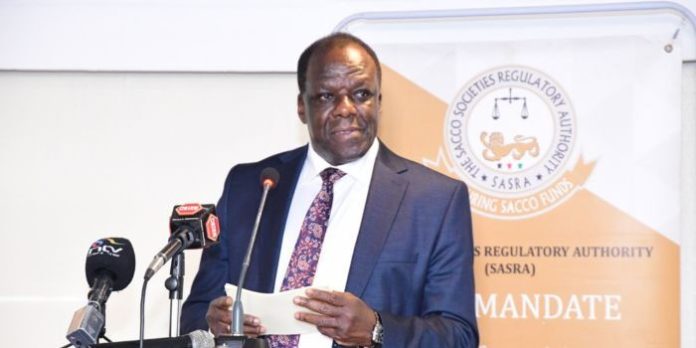The government has announced a three-year plan to reimburse the billions lost by savings and credit cooperative societies (SACCOs) in the Kenya Union of Savings & Credit Co-operatives (KUSCCO) scandal.
Speaking at the Kenya National Police DT SACCO Best Savers Education Conference in Mombasa on Wednesday night, Cabinet Secretary for Cooperatives and MSMEs, Wycliffe Oparanya, pledged that the Ksh13 billion shortfall would be fully settled by 2028.
Last month, the government directed 247 SACCOs to reduce dividend payouts and allocate funds to mitigate potential losses linked to the multi-billion-shilling fraud at KUSCCO.
The State Department for Cooperatives instructed members to prioritise financial stability over immediate returns by setting aside reserves to cushion against possible losses from their deposits and shares in KUSCCO.
However, Oparanya assured members that the government would ensure their accounts were settled, offering a lifeline to those affected by the scandal.
He further disclosed plans to accelerate the establishment of a Deposit Guarantee Fund (DGF) to protect SACCO members from losses in the event of institutional collapse.
“If a SACCO goes down, you can recover your deposits as is done in banks,” Oparanya stated, noting that the legislation to establish the fund remains under Senate review.
A forensic audit by PricewaterhouseCoopers (PwC) uncovered widespread financial malpractice within KUSCCO, including fraudulent bookkeeping, large-scale theft, bribery, unauthorised bank withdrawals, and conflicts of interest involving top executives.
The report revealed that KUSCCO had manipulated financial records to conceal the fraud, falsely projecting profitability. The audit determined that Ksh13.3 billion had been lost, leaving the umbrella body insolvent by Ksh12.5 billion despite having collected Ksh24.8 billion in deposits from 247 SACCOs.
Last month, the Sacco Societies Regulatory Authority (SASRA) attributed the crisis to gaps in legal and policy frameworks. The regulator stated that Ksh14 billion in losses could have been prevented had corrective measures been implemented three years earlier.
The authority warned that policy disparities and sluggish regulatory reforms had allowed KUSCCO to continue operating unchecked, resulting in a 10 per cent core capital erosion across 201 SACCOs.
To prevent future financial scandals, the Cabinet has approved the creation of a SACCO Shared Services Framework. This initiative aims to enable financial institutions to pool resources, adopt financial technology solutions, and enhance collaboration while maintaining operational autonomy.
Additionally, the Cabinet endorsed the establishment of a Central Liquidity Facility (CLF) to facilitate inter-Sacco transactions, short-term lending, and integration into the National Payment System.
“SACCOs with surplus funds can deposit them in the Central Liquidity Facility, allowing other SACCOs to borrow for short- or long-term needs,” Oparanya explained.
The Cabinet also approved reforms to the Deposit Guarantee Fund to strengthen protections for SACCO members, minimise government bailouts, and reinforce financial stability within the cooperative sector.
“By lowering operational costs, fostering innovation, and boosting public confidence, these reforms position SACCOs as key players in Kenya’s financial inclusion and economic empowerment agenda,” read part of the Cabinet’s dispatch.
Source: kENYANS.CO.KE









